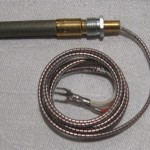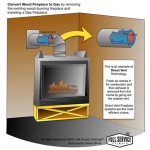Wood Burning Fireplace Blower: Enhancing Efficiency and Comfort
Wood-burning fireplaces offer an undeniable charm, providing warmth and ambiance to homes. However, their efficiency can be improved significantly with the addition of a fireplace blower. A fireplace blower, also known as a fireplace fan, is a device designed to circulate heated air from the fireplace into the room, increasing the overall heating capacity and reducing heat loss up the chimney.
The primary function of a fireplace blower is to redistribute the heat generated by the burning wood. Without a blower, a significant portion of this heat rises directly into the chimney and is lost to the environment. This results in less effective heating of the living space, potentially leading to higher energy bills as supplemental heating systems are used to compensate for the heat loss.
Fireplace blowers are typically installed within the firebox, underneath the firebox, or directly outside the fireplace opening, depending on the specific design and the type of fireplace. They consist of a fan, usually electrically powered, that draws cool air from the room, passes it over the heated firebox or heat exchanger, and then blows the warmed air back into the room. This process of forced convection is considerably more efficient than the natural convection that occurs without a blower.
Understanding the different types and features of fireplace blowers is essential for selecting the right model for a particular fireplace. Factors such as the size of the room, the construction of the fireplace, and the desired level of automation should all be considered.
Types of Fireplace Blowers
Fireplace blowers are generally categorized based on their installation location and design. The most common types include: built-in blowers, hearth-mounted blowers, and external blowers.
Built-in blowers are designed to be integrated directly into the fireplace during its construction or renovation. These units often feature custom-designed housing that fits snugly within the firebox, maximizing heat transfer and minimizing noise. Built-in blowers are often seen as the most aesthetically pleasing option, as they are concealed within the fireplace structure.
Hearth-mounted blowers sit on the hearth, often just below the fireplace opening. These blowers typically draw cool air from the floor level and direct it through a heat exchanger located behind the fireplace. They are relatively easy to install and can be a suitable option for existing fireplaces where a built-in blower is not feasible. However, they can be more visible and may produce slightly more noise than built-in models.
External blowers are positioned outside the fireplace, often connected to ductwork that directs air into and out of the fireplace. These blowers can be used in situations where space within the fireplace is limited or where a more powerful airflow is desired. While they may be more effective at distributing heat to larger areas, they can be more complex to install and may require professional assistance.
Benefits of Using a Fireplace Blower
The advantages of using a fireplace blower extend beyond simply increasing the amount of heat circulated into the room. A well-chosen and properly installed blower can improve energy efficiency, enhance comfort, and even contribute to safety.
One of the most significant benefits is improved energy efficiency. By circulating heated air more effectively, the blower reduces the amount of heat lost up the chimney. This allows the fireplace to heat the room more quickly and maintain a more consistent temperature, potentially reducing the need for supplemental heating and lowering energy costs. The blower ensures that a larger percentage of the heat produced from the wood is actually utilized for heating the home, rather than being wasted.
A fireplace blower can significantly enhance the comfort level in a room. Without a blower, the heat from the fireplace tends to concentrate near the fireplace itself, leaving the rest of the room feeling cooler. By distributing the heat more evenly, a blower can create a more comfortable and balanced temperature throughout the entire space. This is particularly beneficial in larger rooms or homes with open floor plans.
Furthermore, a fireplace blower can contribute to safety by reducing the risk of overheating near the fireplace. By circulating the heat more efficiently, the blower prevents excessive buildup of heat around the firebox, which could potentially damage the fireplace structure or pose a fire hazard. It's important to note, however, that regular maintenance and cleaning of the fireplace and blower are essential for safe operation, including removing creosote buildup.
Key Features to Consider When Choosing a Fireplace Blower
Selecting the right fireplace blower involves considering several key features to ensure optimal performance and compatibility with the existing fireplace. These features include airflow capacity, noise level, control options, and compatibility with the fireplace type.
Airflow capacity, typically measured in cubic feet per minute (CFM), indicates the volume of air the blower can circulate. The appropriate CFM rating will depend on the size of the room and the heating capacity of the fireplace. A larger room or a fireplace with a high BTU output will require a blower with a higher CFM rating to effectively distribute the heat. Consulting the fireplace manufacturer's specifications is important to ensure compatibility.
Noise level is another crucial factor to consider, especially for those who value a quiet environment. Blower noise levels are typically measured in decibels (dB). Lower dB ratings indicate quieter operation. Some blowers feature variable speed controls, which allow users to adjust the airflow and noise level to suit their preferences. Reading user reviews and product specifications can provide insights into the actual noise levels experienced during operation.
Control options vary among different models. Some blowers feature simple on/off switches, while others offer more sophisticated controls, such as thermostat-controlled operation or variable speed adjustments. Thermostat-controlled blowers automatically turn on and off based on the temperature of the firebox, providing hands-free operation and preventing the blower from running unnecessarily. Variable speed controls allow users to fine-tune the airflow and noise level to optimize comfort and efficiency. Remote control functionality is also available on some models, offering added convenience.
Compatibility with the fireplace type is a paramount consideration. Certain blower models are specifically designed for certain types of fireplaces, such as zero-clearance fireplaces or masonry fireplaces. Installing an incompatible blower could damage the fireplace or compromise its performance. Consulting with a qualified fireplace professional or reviewing the manufacturer's recommendations is crucial to ensure proper compatibility and safe installation.

Fireplace Efficiency Blowers And Why You Should Have One

Why Should I Get A Fireplace Blower For My Masonry

6 Blades Fireplace Fan Wood Stove Non Electric For Temu

Thermal Power Fireplace Fan Heat Powered Wood Stove For Log Burner Eco Friendly Four Leaf Fans Wish

Dtower Portable Manual Fireplace Blower Hand Fan Outdoor Barbecue Appliance Leather Bellows Duster For Stoves Living Rooms Com

How To Replace Your Rsf Fireplace Blower Fan

3 Blade Mini Fireplace Fan Furnace Air Blower For Wood Log Burner Eco Friendly Heat Powered Stove China Home Appliance Made In Com

Colossus 8 Blade Dual Head Heat Powered Fireplace Wood Fan Mini Furnace Air Blower Com

Wood Stove Fan Fireplace For Burning Heat Powered Accessories Quiet Operation Circulating Warm Air China Made In Com

Heat Powered Wood Stove Fan With 4 5 Blades Efficiently Circulates Warm Air Reduces Fuel Consumption Ideal For Burning Stoves And Fireplaces Komin Log Accessories Temu
Related Posts








